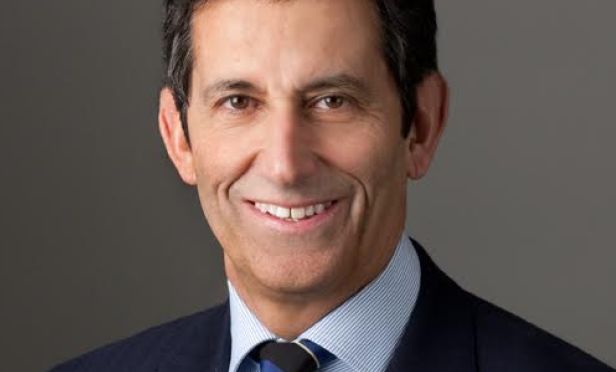
ATLANTA—The old ways of determining what market to build in now are evolving in an age of e-commerce. How do you find strategic development opportunities in unfamiliar terrain?
GlobeSt.com caught up with Jeffrey Bayer, president and CEO of Bayer Properties, to get some answers in part one of this exclusive interview. Read our last interview with him: What Smart Retail Developers Are Asking Themselves.
GlobeSt.com: What are some of the indicators you look at when considering a new market for development?
Bayer: When considering a new market, there are several factors to understand about a potential audience and location. First, how strong is job growth? Second, what percentage of the market has a household income of at least $75,000 per year? Third, we look at the amount of relevant retail square footage per consumer.
While square footage per capita has long been a metric to evaluate a market's potential, we now do more meaningful analysis of the existing square footage. In today's market, a great deal of retail is obsolete because of its location or other factors, and so we must get beyond the overall numbers and look at relevancy.
The final aspect we take into consideration is whether the tenants with which we have strong relationships are already in the market. A location is more appealing if we have the opportunity to introduce new to market brands.
GlobeSt.com: How do you find development opportunities in markets you are unfamiliar with?
Bayer: Traditionally, we have scanned the country for markets with the attributes listed above—strong job growth, a depth of households earning at least $75,000 per year, low relevant retail square footage per capita and the opportunity to introduce strong retailers to a market. Often a retailer will lead us to a market. If a strong tenant is interested in a market, and wants to anchor a development, we will certainly take a close look.
GlobeSt.com: Do you think there are still development opportunities in top-tier markets, or are developers primarily chasing deals in secondary and tertiary locations?
Bayer: I think there are opportunities in all markets to expand as long as you are willing and able to think creatively. There are opportunities to reposition class B and C malls in smart ways.
I don't expect there will be a new enclosed mall built in the next five years, however, there are opportunities to successfully develop new retail projects. Because of the trend of people moving back toward the urban core, developers will tear down or repurpose existing buildings in urban areas, creating projects that are smaller and denser.

ATLANTA—The old ways of determining what market to build in now are evolving in an age of e-commerce. How do you find strategic development opportunities in unfamiliar terrain?
GlobeSt.com caught up with Jeffrey Bayer, president and CEO of Bayer Properties, to get some answers in part one of this exclusive interview. Read our last interview with him: What Smart Retail Developers Are Asking Themselves.
GlobeSt.com: What are some of the indicators you look at when considering a new market for development?
Bayer: When considering a new market, there are several factors to understand about a potential audience and location. First, how strong is job growth? Second, what percentage of the market has a household income of at least $75,000 per year? Third, we look at the amount of relevant retail square footage per consumer.
While square footage per capita has long been a metric to evaluate a market's potential, we now do more meaningful analysis of the existing square footage. In today's market, a great deal of retail is obsolete because of its location or other factors, and so we must get beyond the overall numbers and look at relevancy.
The final aspect we take into consideration is whether the tenants with which we have strong relationships are already in the market. A location is more appealing if we have the opportunity to introduce new to market brands.
GlobeSt.com: How do you find development opportunities in markets you are unfamiliar with?
Bayer: Traditionally, we have scanned the country for markets with the attributes listed above—strong job growth, a depth of households earning at least $75,000 per year, low relevant retail square footage per capita and the opportunity to introduce strong retailers to a market. Often a retailer will lead us to a market. If a strong tenant is interested in a market, and wants to anchor a development, we will certainly take a close look.
GlobeSt.com: Do you think there are still development opportunities in top-tier markets, or are developers primarily chasing deals in secondary and tertiary locations?
Bayer: I think there are opportunities in all markets to expand as long as you are willing and able to think creatively. There are opportunities to reposition class B and C malls in smart ways.
I don't expect there will be a new enclosed mall built in the next five years, however, there are opportunities to successfully develop new retail projects. Because of the trend of people moving back toward the urban core, developers will tear down or repurpose existing buildings in urban areas, creating projects that are smaller and denser.
Want to continue reading?
Become a Free ALM Digital Reader.
Once you are an ALM Digital Member, you’ll receive:
- Breaking commercial real estate news and analysis, on-site and via our newsletters and custom alerts
- Educational webcasts, white papers, and ebooks from industry thought leaders
- Critical coverage of the property casualty insurance and financial advisory markets on our other ALM sites, PropertyCasualty360 and ThinkAdvisor
Already have an account? Sign In Now
*May exclude premium content© 2025 ALM Global, LLC, All Rights Reserved. Request academic re-use from www.copyright.com. All other uses, submit a request to [email protected]. For more information visit Asset & Logo Licensing.








